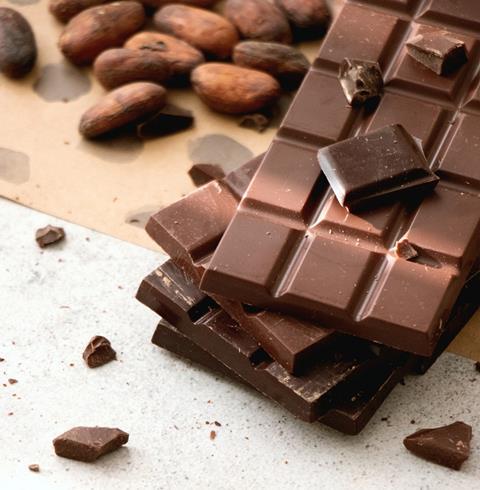Nutritionist Clare Backhouse shows us what we can do to ensure our bodies receive what they truly need

In this series we are learning to ditch health ‘rules’ and approach our health from the perspective of love. Last month we looked at ways to absorb nutrients from food more effectively, but what happens when hunger and eating get complicated by cravings?
We are going to take a look at what cravings are, why they can be troublesome and how loving ourselves well could help to stave them off. It may come as a surprise to learn that the key to banishing cravings is often to add something in to the diet, rather than take it away.
Confessing the cravings
Many of my clients talk about wanting to eat salty and sugary food, or to over-eat comforting carbohydrates like bread and pastries, even though this doesn’t actually make them feel better in the long term.
Often these confessions are accompanied by embarrassment. People feel that if they had more willpower, or weren’t somehow ‘faulty’, they would be able to conquer their cravings.
I can sympathise, as there was a time in my life when I craved sugary milk chocolate so much that I could eat over 100 grams of it every day*! But the crucial thing about cravings is that there is always a reason behind them, and if we want to deal with them successfully, we have to start from love, not self-condemnation or shame.
Why? Condemnation is so busy judging that it can’t see how to solve the problem. Love, by contrast, will patiently find out what is really going on and gently, effectively, take steps in a healthier direction.
Cravings vs hunger
How can we discern between healthy hunger and unhealthy cravings?
Well, it’s complex, and I won’t pretend to define it perfectly. I should also make it clear that I am not talking about diagnosed eating disorders, but about the spectrum of eating habits that most of us experience in everyday life.
One key difference is that where hunger makes us interested in eating protein and vegetables, craving directs us urgently to one kind of food, which is often sugary, like biscuits, or made of refined carbohydrates, like white bread.
In societies where we’re blessed with enough food, hunger tends to feel like a gentle reminder, whereas cravings tend to feel like aggressive nagging.
Cravings can also create a desire to eat even shortly after eating. This means we can rip open the biscuit tin when lunch was only two hours ago.
Identifying the triggers
As I’ve said before, when we know our bodies better, we can love them better. But cravings may have a number of different triggers. We might crave certain foods when we experience challenging emotions like anger, frustration or sadness, because we’ve learned to self-soothe that way.
When I squashed down feelings of grief, for example, I ‘coped’ by over-eating chocolate, instead of actually dealing with the grief. Now, I am an advocate of dealing properly with emotional and spiritual issues, and in many cases this is crucial to supporting physical health.
However, addressing physical triggers may also reduce the overall problem. A key physical factor in cravings is macronutrient balance.
Macronutrients are the three main building blocks of food: protein, fat and carbohydrate (carbs). Protein foods include eggs, cheese, meat, fish and beans. Fatty foods include butter and olive oil. Carbohydrate foods can be nutrient dense complex carbohydrates, such as vegetables and whole grains, or nutrient-poor simple carbohydrates like white pasta – or sugar.
Often, when my clients crave sugary or refined carb foods, it’s not wholly because of emotional troubles; it’s because they are not eating the right balance of protein, fat and carbohydrate foods. In fact, mostly it’s because they’re not eating sufficient protein.
Protein
We tend to think of breakfast as a meal of cereal, porridge, toast or croissants. But these carbohydrate foods are quickly digested in the body, leaving you tired and hungry by mid morning.
Since the fastest way to restore energy is to eat something quickly digested, like sugar or refined carbs, we’ll crave those foods again, which ends up creating a cycle of carb-cravings. However, if we provide plenty of energy through proteins and healthy fats, we will stay full for longer and cravings are less likely to hit. This is because protein foods are slower to break down and they also provide energy for longer.
For this reason, I often ask my clients to eat sufficient protein foods at meals. For example, at breakfast, porridge becomes a base for nuts and seeds, or toast becomes an accompaniment for eggs. I’m amazed how often they then forget all about their once-essential ‘elevenses’, or four o’clock cookies.
Giving our bodies what they need
The typical approach to solving food cravings is to ‘just try harder’ not to eat too many of the ‘wrong’ foods – and then beat ourselves up if that doesn’t work. But, as we’ve seen, cravings may be the physiological response of a body that hasn’t been given enough slow-burning energy through protein foods.
At the very least, when we provide sufficient protein in our diet, the tendency to crave sugar and refined carbs is more likely to reduce.
So, by lovingly identifying and supplying our true nutritional needs, we can beat those unhelpful cravings.
*The NHS recommends that adults daily consume no more than 30 grams of ‘free’ sugars. I was eating 100g of chocolate every day, but not the ‘good’, organic, 85% cocoa chocolate. I was eating milk chocolate, a well-known brand which contains 56 grams of sugar per 100g.
So I was consuming almost twice the maximum recommended amount of sugar, every single day. (And I should mention that even the NHS 30g sugar limit is, in many experts’ opinion, still too high.)
For more information, contact Clare through her website: transformationnutrition.org. Follow her on Instagram.



























